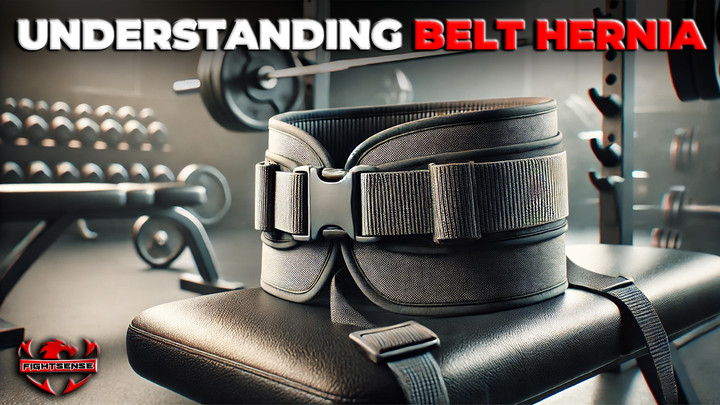Understanding Belt Hernia: Does a Hernia Belt Work for Weightlifting?
10th Mar 2025
A hernia weightlifting belt might help a lot whether you're recuperating from a hernia or lifting high weights. These belts can help ease pain and strain while exercising, but they won't fix hernias. Instead, they are just meant to help with symptoms and stop more problems from happening. This article talks about how hernia belts operate, what their benefits are, and why surgery is still the best long-term way to fix a hernia.
Key Highlights:
-
These belts help support the abdomen, therefore lowering the pressure on hernia-prone areas during lifting.
-
Though useful, hernia belts cannot treat hernias. Still, the most successful course of treatment is surgery.
-
A hernia belt can help control discomfort and stop more internal organ bulging under exercise.
-
When choosing the correct hernia belt for weightlifting or daily exercise, comfort, fit, and purpose are the most important considerations.
-
Although lifting belts help the lower back, they do not really target the abdominal area where hernias develop.
What is a Hernia?
A hernia is a condition where a part of an internal organ, often the intestines, bulges through a weak spot in the abdominal wall. It’s commonly seen in people who lift heavy weights or engage in intense physical activities. Hernias can form in various areas, like the groin (inguinal) or the abdominal wall.
For those involved in weightlifting or high-intensity workouts, a hernia belt can offer vital support. But do these belts really work in preventing or managing hernias? Let’s explore how they function and if they help.
What is a hernia belt?
A hernia belt is a supportive garment designed to help stabilize the abdominal area, especially during physical activity. It provides compression to keep a hernia in place and reduce strain on the affected area, which can help prevent further bulging of internal organs.
The Role of a Hernia Belt for Weightlifting
A hernia belt for weightlifting gives the stomach area more support and stability. When you lift heavy weights or undertake high-intensity workouts, the pressure on your abdominal wall goes up, which might make an existing hernia worse. The hernia belt is helpful since it
Supporting the Abdominal Wall: The belt helps keep the abdomen stable and lowers the chance of the hernia pushing out more.
Managing Discomfort: Putting light pressure on the affected area can help ease pain.
Preventing More Stress: The belt helps spread the weight out more evenly, which lowers the chance of making the hernia worse when you lift heavy things.
Choosing the Right Belt for Hernia Support:
When selecting a hernia belt, consider the following:
-
Fit: Ensure it’s snug but not too tight to avoid restricting movement.
-
Material: Choose breathable, flexible materials for comfort during extended use.
-
Purpose: Select a belt designed for either weightlifting or everyday use based on your needs.
Can Lifting Belts Prevent Hernias?
Lifting belts are designed to support the lower back and stabilize your core, but they don’t directly prevent hernias. A hernia belt, however, targets the abdominal area where hernias commonly occur, offering specific protection during lifting. While lifting belts can aid with back support, they are not a substitute for a hernia belt.
When to Use a Hernia Belt for Weightlifting
A hernia workout belt is best used when lifting heavy weights or performing exercises that put strain on your abdominal region. It can be especially useful in the following situations:
-
During Recovery: After hernia surgery, the belt can provide gentle compression and support.
-
For Intense Lifting: It helps protect your abdomen during heavy lifts.
-
For Inguinal Hernias: A belt for inguinal hernias helps stabilize the groin area during leg or core exercises.
Benefits of Hernia Belts
-
Pain Relief: A well-fitted hernia waist belt can reduce discomfort caused by the hernia.
-
Prevention of Further Damage: It helps keep the hernia from bulging further, lowering the risk of complications.
-
Confidence: With added abdominal support, you can focus more on your workout without the fear of aggravating the hernia.
Shop Now !
Conclusion:
A hernia belt can be a helpful tool for managing and preventing hernias during weightlifting. It offers support, reduces strain, and provides pain relief, especially during high-pressure exercises. However, remember that it’s not a cure—surgery remains the best option for complete hernia treatment. Always consult a healthcare professional to find the best approach for your condition.
Disclaimer:
This content is for informational purposes only and should not replace professional medical advice. Always consult a healthcare provider before deciding on treatment or using a hernia belt.
FAQs
1. Do hernia belts stop hernias from happening?
No, hernia belts do not stop hernias from happening. They help support hernias that are already there, but they don't stop new ones from forming.
2. Is it possible for a hernia belt to fix a hernia?
No, a hernia belt won't fix a hernia. It only helps for a short time and when you're doing active activities. The only permanent fix is surgery.
3. When is it time to wear a hernia belt?
You should wear a hernia belt when you do anything that increase pressure on your stomach, such lifting weights or working out hard. Always talk to a doctor before using one.
4. Do you always need surgery for a hernia?
The best long-term way to fix a hernia is to have surgery. Belts and other non-surgical measures can help for a short time, but they can't fix the problem.
5. Can I lift weights if I have a hernia?
You can lift weights if you have a hernia, but you need to be careful and use a hernia belt for extra support.

